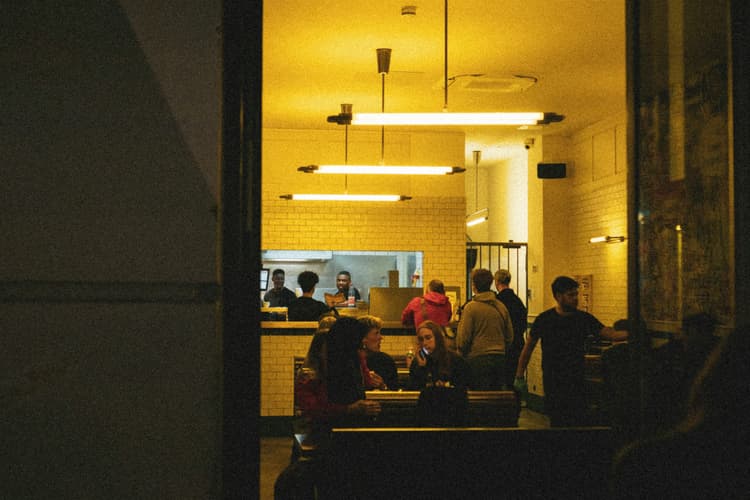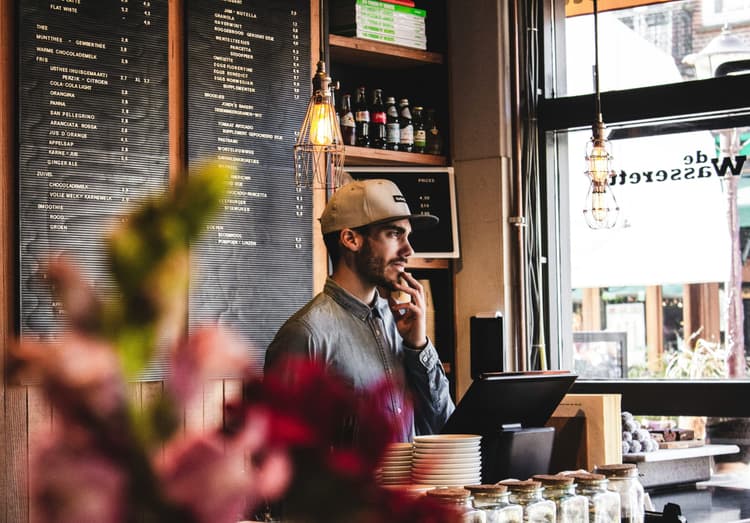When most restaurant operators consider self-service kiosks, they focus on the obvious benefits: faster service, reduced labor costs, and shorter lines. But there’s a less visible advantage that’s transforming bottom lines across the industry—one that many operators don’t fully appreciate until they see it in their own numbers. Restaurant customers who interact with self-service kiosks typically purchase 10% to 30% more than those who order from cashiers. This isn’t a minor uptick or a statistical anomaly. It’s a fundamental shift in purchasing behavior that directly impacts restaurant kiosk ROI and transforms the economics of quick-service operations.
Key Data Points:
- Restaurant customers ordering via kiosks typically purchase 10% to 30% more than those who order from cashiers
- Ticket sizes average 12% to 20% higher with kiosk ordering, with some restaurants reporting increases as high as 30%
- One QSR found that kiosk-linked loyalty scans boosted spend per order by 21% and overall loyalty engagement by 31%
- 82% of operators reported positive impact on service speed, while 63% saw higher check sizes from upsell prompts
- 76% of kiosk-enabled restaurants reduced wait times, 67% increased check sizes, and 69% improved order accuracy
The Numbers Don’t Lie
The data supporting higher average order value through kiosk ordering is remarkably consistent across different restaurant formats and geographies. Ticket sizes average 12% to 20% higher when customers order from self-service kiosks rather than cashiers, with some restaurants reporting increases as high as 30%.
These aren’t just theoretical projections—they’re real-world results from thousands of restaurant locations. In one particularly compelling case, a QSR chain found that kiosk-linked loyalty scans boosted spend per order by 21% while simultaneously increasing overall loyalty engagement by 31%. That’s the kind of dual benefit that drives meaningful business transformation.
Industry-wide surveys reinforce these findings. Research shows that 82% of operators reported a positive impact on service speed after implementing kiosks, while 63% saw higher check sizes specifically attributed to upsell prompts built into the ordering interface.
Why Kiosks Drive Higher Spending
The revenue impact of restaurant kiosks isn’t magical—it’s psychological. Several factors combine to create an environment where customers naturally spend more:
The Removal of Social Pressure
When ordering from a human cashier, customers often feel subtle pressure to make quick decisions and keep the line moving. This rushed environment doesn’t encourage browsing, customization, or consideration of add-ons. There’s also a social hesitation around asking for modifications or adding multiple extras that might seem indulgent.
Self-service restaurant kiosks eliminate this pressure entirely. Customers can take their time exploring menu options, reading descriptions, and considering upgrades without worrying about holding up other guests or being judged by staff. This relaxed decision-making environment consistently leads to larger orders.
Strategic Visual Presentation
Kiosks present menu items with high-quality images, detailed descriptions, and logical organization that makes the entire menu more discoverable. Items that might get overlooked during a verbal exchange with a cashier become visible and appealing on a digital interface.
The visual nature of kiosk ordering also makes add-ons and upgrades more tangible. When customers can see exactly what an extra topping or premium ingredient looks like, they’re more likely to add it to their order.
Intelligent Upselling at the Right Moment
Perhaps the most powerful aspect of upselling technology is timing. Well-designed kiosk software knows exactly when to suggest relevant additions to an order. After a customer selects an entrée, the system might highlight complementary sides. Before checkout, it can remind them about desserts or drinks.
These prompts aren’t random—they’re data-driven suggestions based on what other customers typically order together. The recommendations feel helpful rather than pushy because they’re contextually relevant to what the customer has already selected. Bite’s AI-powered upsell technology, Bite Lift, is the best-in-class solution in the kiosk market.
Human cashiers, no matter how well-trained, can’t consistently deliver this level of personalized, perfectly-timed upselling during every transaction, especially during busy periods when speed becomes the priority.
Customization Freedom
Modern consumers love customization. They want their orders exactly how they like them, and kiosks make customization effortless. The ability to easily modify ingredients, adjust portion sizes, and build personalized meals encourages customers to create their ideal dish—often resulting in premium additions that increase the ticket size.
This customization isn’t just about revenue. It also drives customer satisfaction. When people get exactly what they want, they’re more likely to return and become regular customers.
The Loyalty Connection
The integration of loyalty programs with kiosk ordering creates a powerful revenue multiplier. When customers scan their loyalty accounts at a kiosk, they’re not just earning points—they’re also receiving personalized recommendations based on their purchase history.
This personalization drives both immediate revenue through targeted upsells and long-term revenue through increased engagement. The 31% boost in loyalty engagement that one QSR experienced isn’t just about more frequent visits—it’s about creating customers who have a deeper relationship with the brand and consistently spend more per visit.
Maximizing Average Order Value Without Alienating Customers
The key to successful kiosk upselling is balance. The most effective upselling technology doesn’t bombard customers with endless prompts or create friction in the ordering process. Instead, it makes strategic, relevant suggestions that genuinely enhance the customer’s meal.
Modern kiosk platforms like Bite engineer their upselling features specifically to maximize average order value while maintaining a smooth, enjoyable user experience. The system might suggest a popular dessert, but it won’t delay the ordering process or force customers through multiple screens of add-ons they’re not interested in.
This sophisticated approach respects the customer’s time and autonomy while still capturing revenue opportunities that would otherwise be missed. It’s why customers consistently report positive experiences with kiosk ordering, even as operators see dramatically higher ticket sizes.






